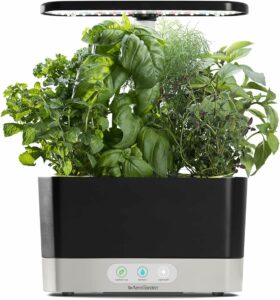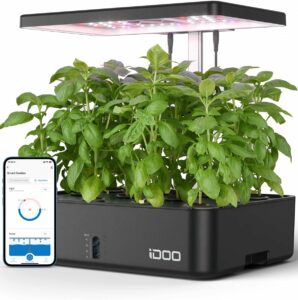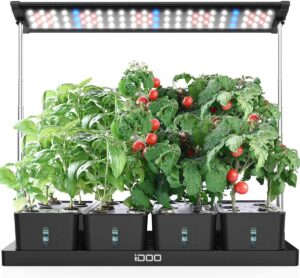Pros
- Initial Cost: The upfront cost of purchasing hydroponic systems and equipment can be higher compared to traditional gardening methods.
- Technical Knowledge Required: Successful hydroponic gardening may require a learning curve, particularly for beginners unfamiliar with nutrient solutions and system management.
- Equipment Maintenance: Regular maintenance is crucial, involving cleaning, monitoring, and potential replacement of system components.
- Power Dependency: Some hydroponic systems rely on electricity, increasing energy consumption compared to traditional gardening.
- Faster Plant Growth: Hydroponic systems provide direct access to nutrients, promoting faster and more efficient plant growth.
- Water Efficiency: Hydroponics uses significantly less water compared to traditional soil gardening, making it a more environmentally friendly option.
- Space Optimization: Ideal for urban and indoor gardening, hydroponic systems maximize space utilization and allow vertical cultivation.
- Reduced Pest and Disease Risks: Soilless cultivation minimizes the risk of soil-borne pests and diseases, promoting healthier plants.
Cons
Hydroponic Garden Kits
Introduction to Hydroponics
- Brief Explanation of Hydroponic Gardening
- Definition of hydroponics: Growing plants without soil, using nutrient-rich water solutions.
- Historical context: Overview of the origins and development of hydroponic techniques.
- Advantages of Hydroponic Systems
- Efficient nutrient absorption: Plants can directly access nutrients, promoting faster growth.
- Water conservation: Hydroponics typically uses less water compared to traditional soil gardening.
- Space optimization: Suitable for various environments, including urban spaces and indoor settings.
- Reduced risk of pests and diseases: Soilless cultivation minimizes the chance of soil-borne issues.
- Overview of Hydroponic Garden Kits
- Definition of hydroponic garden kits: Ready-made systems for easy implementation.
- Components included: Common elements like nutrient reservoirs, pumps, growing medium, and instructions.
- Accessibility: How these kits make hydroponic gardening accessible to beginners and hobbyists.
- Popular brands and models: A brief mention of reputable hydroponic kit options.
Provo Green Products embodies a beacon of trust in the realm of sustainable discoveries, offering choices that enhance your life and leave a positive mark on our planet.
Leveraging extensive expertise in manufacturing, construction, and various trades, we provide a solid foundation for sustainable living.
Our meticulous research process guarantees that our information about each product is precise and current, allowing you to make informed decisions.
Whether your interest lies in solar products, electric bikes, security, or other eco-friendly alternatives, our credibility commitment ensures access to dependable insights, guiding your journey toward a more sustainable lifestyle.
Provo Green Products is your go-to destination for finding the right green products for your lifestyle.
Disclosure: We may earn a small commission if you click on one of our links. This will not affect the pricing of the product whatsoever.
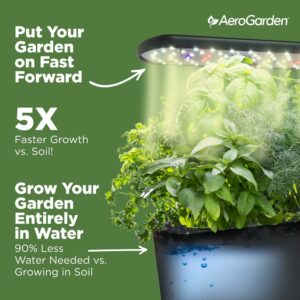
Types of Hydroponic Garden Kits
- Nutrient Film Technique (NFT) Systems
- Description: A thin film of nutrient-rich water continuously flows over plant roots.
- Advantages: Efficient nutrient delivery, suitable for smaller spaces, and minimal water usage.
- Considerations: Proper slope for nutrient flow, maintenance of tubing, and nutrient solution management.
- Deep Water Culture (DWC) Systems
- Description: Plants suspended in nutrient-rich water with air stones providing oxygen.
- Advantages: Simple design, excellent for beginners, and promotes rapid plant growth.
- Considerations: Monitoring water oxygen levels, preventing root rot, and regular water quality checks.
- Aeroponic Systems
- Description: Plants suspended in air, with nutrient-rich mist periodically sprayed on roots.
- Advantages: Increased oxygen to roots, faster growth rates, and efficient nutrient absorption.
- Considerations: Proper misting intervals, maintenance of spray nozzles, and potential clogging issues.
- Drip Systems
- Description: The nutrient solution drips onto the base of each plant through a network of tubes.
- Advantages: Precise nutrient delivery, customizable for various plant types, and scalable.
- Considerations: Regular checks for clogs, adjusting drip rates, and proper placement of emitters.
- Wicking Systems
- Description: Plants draw up nutrient solution through a wicking medium (e.g., coconut coir or felt).
- Advantages: Low-cost, simple setup, and suitable for smaller-scale hydroponic gardening.
- Considerations: Choosing an appropriate wicking medium, maintaining moisture levels, and proper nutrient balance.
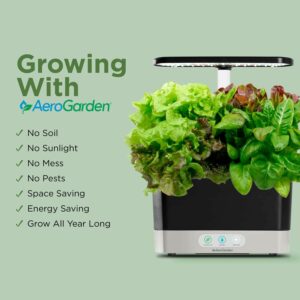
Choosing the Right Kit for You
- Considerations for Beginners
- Kit complexity: Assessing personal comfort with assembly and system management.
- Size and space: Choosing a kit that fits available space and aligns with gardening goals.
- Automation options: Considering automated features for ease of use, especially for novice hydroponic gardeners.
- Factors Based on Available Space
- Indoor vs. outdoor: Determining whether the hydroponic system will be set up indoors or outdoors.
- Size of the growing area: Match the kit size to the available space for optimal plant growth.
- Vertical gardening options: Exploring kits suitable for vertical space utilization, maximizing growing potential.
- Budget-Friendly Options
- Initial investment: Evaluating the cost of the kit and associated equipment.
- Long-term expenses: Considering ongoing costs such as nutrient solutions, replacement parts, and energy consumption.
- DIY vs. pre-assembled kits: Weighing the cost savings of assembling a kit versus purchasing a ready-made option.
- Customization and Scalability
- Modular design: Assessing the kit’s ability to expand or modify based on changing needs.
- Compatibility with additional components: Checking if the kit allows integration with supplemental lighting, advanced monitoring systems, or nutrient customization.
- Future growth plans: Choosing a kit that aligns with long-term gardening goals and potential expansion.
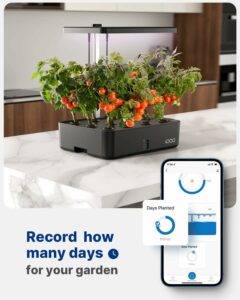
Setting Up Your Hydroponic Garden
- Preparation of Growing Area
- Clean and sanitize the space: Ensure the designated area is free of contaminants to prevent potential issues.
- Adequate lighting: Assess natural and artificial lighting options, considering the light requirements of the chosen plants.
- Ventilation: Provide proper air circulation to maintain optimal environmental conditions for plant growth.
- Installation of Hydroponic System Components
- Assemble the kit: Follow the manufacturer’s instructions to install the hydroponic system components.
- Positioning of reservoir and pump: Place these elements strategically for efficient nutrient delivery and circulation.
- Secure tubing and connectors: Ensure a secure and leak-free connection between system components.
- Nutrient Solutions and pH Levels
- Mix nutrient solution: Follow recommended guidelines for preparing the nutrient solution, considering plant-specific needs.
- pH testing and adjustment: Regularly monitor and adjust the pH of the nutrient solution to maintain optimal nutrient uptake by plants.
- EC/TDS measurement: Check and adjust the electrical conductivity (EC) or total dissolved solids (TDS) in the nutrient solution for proper nutrient concentration.
- Monitoring and Adjusting Environmental Conditions
- Temperature control: Maintain an appropriate temperature range for plant growth, adjusting as needed for specific crops.
- Humidity levels: Monitor and adjust humidity to prevent issues such as mold and mildew.
- Light duration and intensity: Set up a consistent light schedule and adjust intensity based on plant requirements and growth stages.
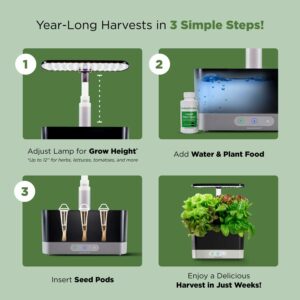
Maintenance and Troubleshooting
- Regular System Maintenance
- Cleaning routine: Establish a schedule for cleaning system components, including reservoirs, pumps, and tubing.
- Nutrient solution changes: Periodically replace the nutrient solution to prevent nutrient imbalances and ensure plant health.
- Equipment inspection: Regularly check for wear and tear, and promptly replace any damaged or malfunctioning parts.
- Common Issues and Solutions
- Nutrient deficiencies: Identify symptoms of nutrient deficiencies and adjust the nutrient solution accordingly.
- Algae growth: Implement light-blocking measures and use light-resistant materials to prevent algae growth in the nutrient solution.
- Clogging in tubing or emitters: Regularly inspect and clean tubing and emitters to prevent clogs that can hinder nutrient flow.
- Tips for Optimal Plant Growth
- Pruning and training: Encourage proper plant development through pruning and training techniques.
- Pollination (if growing fruiting plants): Learn about hand pollination techniques or provide suitable conditions for natural pollination.
- Pest prevention: Implement preventive measures to minimize the risk of pests, such as introducing beneficial insects or using organic pest control methods.
- Troubleshooting Guide for Common Problems
- Reference resources: Keep a troubleshooting guide or manual provided by the kit manufacturer for quick problem-solving.
- Online communities and forums: Join hydroponic gardening communities to seek advice and share experiences with fellow growers.
- Professional assistance: If issues persist, consider consulting with hydroponic experts or professionals for more advanced troubleshooting.
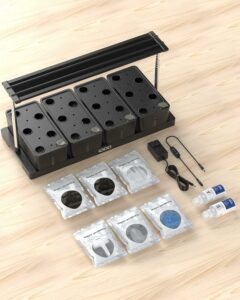
Conclusion
Venturing into hydroponic gardening with the right kit opens a world of efficient and space-conscious plant cultivation.
From selecting an appropriate kit to meticulous setup, monitoring, and troubleshooting, the process demands dedication.
Regular maintenance ensures sustained success, and as one becomes attuned to the unique needs of their hydroponic garden, the rewards of thriving, soilless cultivation become evident.
With continuous learning and hands-on experience, individuals can harness the full potential of hydroponics, cultivating a flourishing and sustainable garden.
Stay in Touch!
I’am a dedicated entrepreneur with many years of experience and an integrity-driven individual who is highly motivated to succeed. Leveraging extensive expertise in manufacturing, construction, and various trades, we can provide a solid foundation for sustainable living. Our meticulous research process guarantees that our information about each product is precise and current, allowing you to make informed decisions. A deep understanding of business operations empowers me to consistently implement improvements that result in ongoing success. Visit site.

